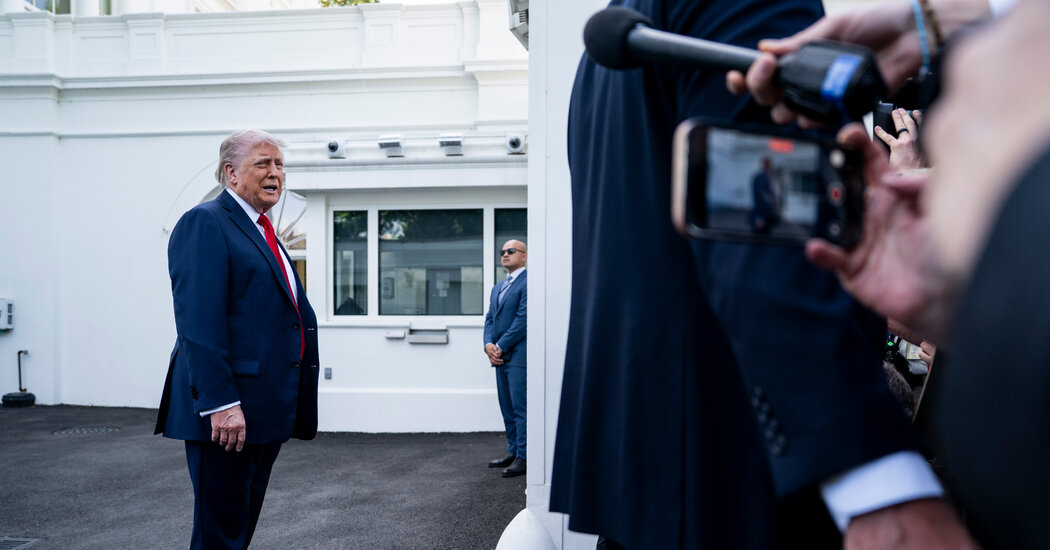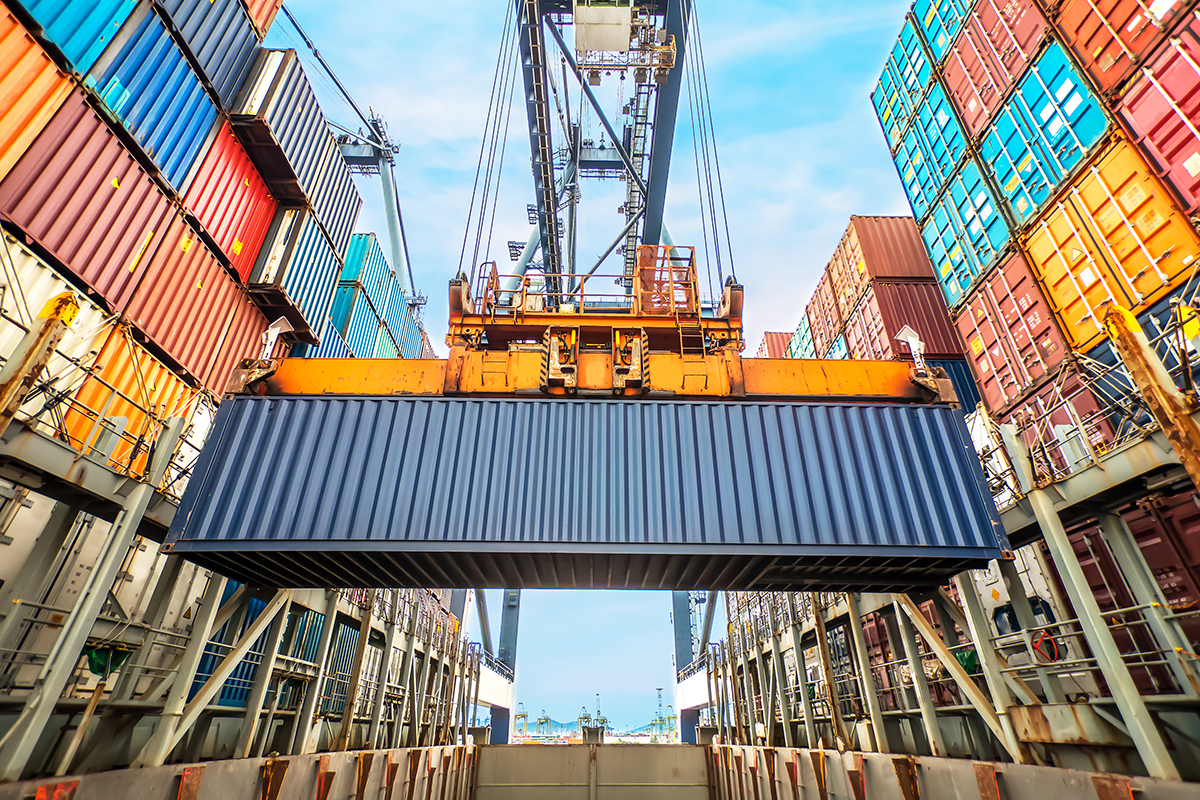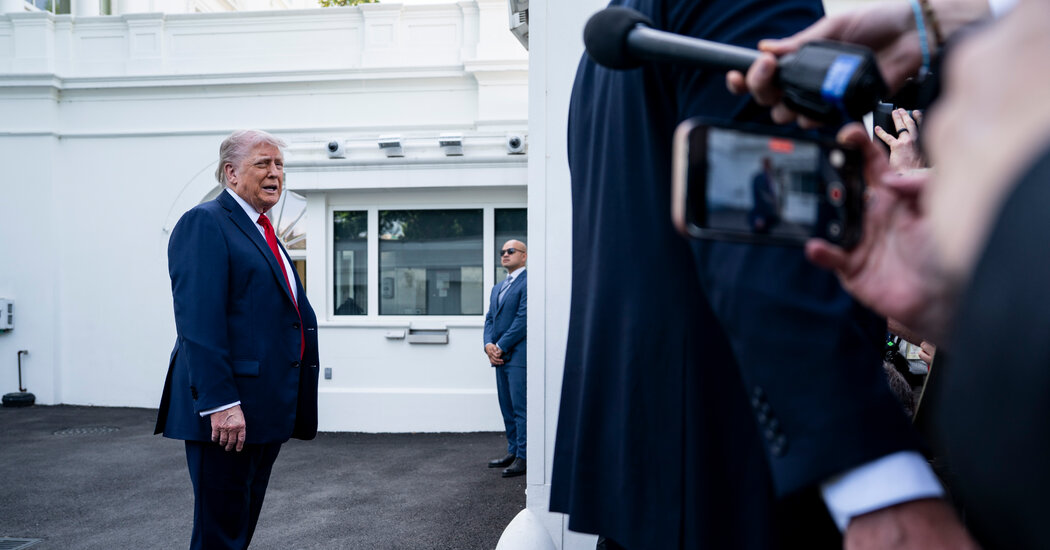## Trump’s Tariff Wall: Bricks and Mortar Crumbling? Remember the promise of “America First”? President Trump’s signature economic strategy, built on the foundation of hefty tariffs intended to shield American industries and bring manufacturing jobs back home, looks increasingly shaky. The New York Times delivers a powerful blow to this once-touted policy, revealing the cracks in the “Tariff Wall” and the mounting economic consequences. Prepare to unpack the reality behind the rhetoric, as we delve into the chilling analysis of Trump’s trade war and its impact on American workers, businesses, and the global economy.
The 30-Day Pause and Ongoing Uncertainty

After weeks of escalating rhetoric and threats, a momentary calm has descended on the North American trade landscape. Canadian Prime Minister Justin Trudeau and US President Donald Trump met on Monday, following a weekend marked by the imposition of steep tariffs by the US on Canadian goods and retaliatory measures from Canada. The anticipated tariff war, which threatened to inflict significant economic damage on both countries, appears to be on hold for now. A 30-day pause has been implemented, giving both sides time to re-evaluate their positions and explore potential solutions.
However, the reprieve is not without its caveats. The underlying tensions remain, and the threat of tariffs still looms large. The 30-day pause serves as a temporary band-aid on a deeper wound, highlighting the precarious nature of the economic relationship between these two longstanding trading partners.

Economic Fallout and Uncertainty
The potential economic fallout from a full-blown trade war between the US and Canada is considerable. Both countries are deeply integrated economies, with extensive supply chains and trade relationships spanning numerous sectors. The imposition of tariffs would ripple through both economies, disrupting businesses, increasing prices, and ultimately harming consumer welfare.
Projected GDP Reduction and Inflationary Pressures
Unionjournalism analysis, drawing on projections from leading economic institutions, suggests that a full implementation of the threatened tariffs could reduce Canada’s GDP by as much as 2 percent. This would represent a significant setback for an economy that was already projected to grow at a modest 1.8 percent in 2023. The tariffs would also contribute to inflationary pressures, pushing the headline inflation rate from the current 2 percent to an estimated 2.7 percent. This would erode purchasing power and further strain household budgets.
Risk of Recession in Canada and Job Losses Across Industries
The combination of a shrinking GDP and rising inflation could push Canada into a recession. A significant decline in manufacturing output, particularly in sectors heavily reliant on US markets such as automotive and aerospace, is a key concern. The ripple effects would extend to other sectors, including transportation, agriculture, and retail, leading to job losses across the board. The Canadian dollar’s depreciation, while potentially mitigating the cost of exports to US importers, would exacerbate the pain for Canadian businesses and consumers facing higher import prices.
The Vulnerability of Canadian Industries to Trade Disputes
The recent trade tensions highlight the vulnerability of Canadian industries to external shocks, particularly those deeply integrated with the US economy. Canada’s reliance on the US market for its goods and services, coupled with complex supply chains, leaves it exposed to disruptions emanating from political disputes. The experience underscores the need for diversification and resilience in Canada’s economic strategy.
Diversification and Strategic Re-evaluation
The current trade challenges provide a stark reminder of the need for Canada to diversify its trading partners and reduce its overreliance on the US market. While the US remains Canada’s largest trading partner, exploring new markets and strengthening existing relationships with other countries can help mitigate the risks associated with geopolitical uncertainties.
Exploring Alternative Trade Partnerships and Reducing Reliance on the U.S.
Canada has an opportunity to deepen its trade ties with other countries, including those in Asia, Europe, and Latin America. Negotiating new trade agreements and expanding existing ones can open up new markets for Canadian goods and services, reducing dependence on the US market. This diversification strategy can also create new economic opportunities and foster greater economic resilience.
Addressing Interprovincial Trade Barriers to Strengthen Domestic Markets
Beyond seeking new markets abroad, Canada should also focus on strengthening its domestic market. Addressing interprovincial trade barriers can facilitate the free flow of goods and services within Canada, fostering greater economic integration and competitiveness. By removing these barriers, Canadian businesses can tap into a larger domestic market, reducing their vulnerability to external shocks.
Lessons Learned from the COVID-19 Pandemic and the Importance of Resilience
The COVID-19 pandemic underscored the importance of supply chain resilience and diversification. Canada’s experience during the pandemic highlighted the risks associated with overreliance on a single source for essential goods. The current trade tensions serve as a further reminder of the need to build more resilient and diversified supply chains. Investing in domestic manufacturing, exploring alternative sourcing options, and fostering a more diversified economy are crucial steps towards building greater economic resilience.
The Broader Implications
The ongoing trade dispute between the US and Canada has broader implications for the global trading system. The potential for escalation and wider economic repercussions raises concerns about the stability and prosperity of the global economy.
Global Trade Tensions and the Rise of Protectionism
The US-Canada trade dispute is part of a broader trend of rising trade tensions and protectionism. Trade wars, tariffs, and other trade barriers can disrupt global supply chains, stifle economic growth, and harm consumer welfare. The erosion of multilateral trade agreements and the weakening of international institutions that promote free trade further exacerbate these risks.
The Impact on Global Economic Growth and Stability
A sustained trade war between major economies like the US and Canada could have a significant negative impact on global economic growth. Reduced trade, investment, and consumer confidence can lead to a slowdown in economic activity, potentially triggering a global recession. The uncertainty and instability created by trade wars can also undermine financial markets and disrupt global capital flows.
The Political Cost of Trade Wars
Trade wars can have significant political costs for the governments involved. The imposition of tariffs and retaliatory measures can damage consumer confidence, lead to public dissatisfaction, and create political instability.
The Impact on Consumer Confidence and Public Perception
Trade wars can lead to higher prices for consumers, making it more expensive to purchase essential goods and services. This can erode consumer confidence and lead to a decline in spending, further harming the economy. The public may also perceive trade wars as unfair and damaging to national interests, leading to negative political consequences for the governments involved.
The Potential for Political Instability and Backlash Against Protectionist Policies
The economic pain caused by trade wars can fuel political instability and social unrest. As consumers and businesses feel the negative effects of tariffs and trade disruptions, they may become more critical of their governments’ economic policies. This can create a backlash against protectionist policies and lead to calls for greater international cooperation and free trade.
Conclusion
The New York Times’s exposé on Trump’s tariffs reveals a strategy in shambles. Once touted as a tool to revitalize American manufacturing, the tariffs have instead become a burden on businesses and consumers alike. The article meticulously details the economic fallout, highlighting the rise in prices, the stagnation of American businesses, and the retaliatory measures from trading partners.
The implications of this economic gamble are far-reaching. The erosion of American competitiveness, the strain on consumer wallets, and the potential for global trade wars are all serious consequences that cannot be ignored. Beyond the immediate economic impact, the article raises critical questions about the efficacy of protectionist policies in the modern global economy. Ultimately, the Trump administration’s reliance on tariffs as a primary economic tool has yielded more pain than gain, leaving a legacy of uncertainty and instability in its wake. As we move forward, the need for a nuanced and collaborative approach to international trade becomes increasingly apparent.
The true cost of these tariffs extends far beyond the balance sheet. It is a cost borne by families struggling with rising prices, by businesses struggling to compete, and by the global economy struggling to find its footing. The question remains: will we learn from this costly experiment or continue down a path of economic isolationism? The answer will shape not only our economic future but also our role in the world.
